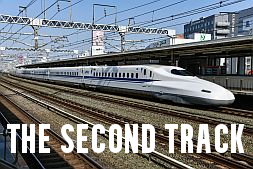Senior Indigenous Men Forgotten
There have been real achievements in relation to articulating the needs of indigenous woman and children over the last decade. The needs of senior indigenous men are not taken so seriously; and this group is regularly marginalised and poorly represented in non-indigenous forums.
This is probably because a perceived degree of similarity with women and children between the two cultures when approached from a modern viewpoint (as found in the mainstream media).
The perceived needs of indigenous women and children make ‘commonsense’ and appear to require little serious thought.
However, understanding the needs and role of senior indigenous men in Australian life poses a much more difficult challenge.
In place of informed opinions based on real indigenous men, we regularly encounter the worst kind of negative stereotypes. And so we are manipulated by those with other agendas.
But the well-being of senior indigenous men is the key to getting the answer right when it comes to restoring a degree of stability and sanity into the whole of life here.
It is pointless seeking to address the needs of indigenous women without also attending to those of their grandfathers, fathers, brothers, uncles, sons, nephews and husbands. And these needs have been long neglected.
In particular, and all things considered (including the importance of carefully targeting scarce resources), we need to focus on the well-being of those who are; and who will become, senior indigenous men.
First Australia’s men have been subjected to a two centuries long form of psychic attack by people who would prefer to see them (and what they represent) gone from Australian life.
Recent events in the NT show this psychic attack on indigenous men is still very much a popular practice. And yet, when the senior lawmen are knocked out from the place life has reserved for them, life unravels for the whole group.
Even a 2009 report from the UN Committee on Economic Social and Cultural Rights, in relation to Australia, "…calls on the State party to take immediate steps to improve the health situation of indigenous people, in particular women and children," (my emphasis)
How can the ‘experts’ at the U.N. exclude the senior indigenous men in this way? Are they completely out of touch with Australian facts of life? Indigenous men are the ones who are actually dying earlier.
Colonisation here has been a bit like a cloning process. By removing senior lawmen (as cultural carriers) from the centre of the social and ecological ‘cell’, a space is opened into which Western culture can be inserted, and then reproduce itself using the resources of First Peoples’ living countries. Life runs wild as a result.
One of the very important roles of senior men is to ‘make men’ out of the raw materials provided by their women – boys. Well-made men serve as good husbands and good members of their communities. They also attend to important land management practices (both ‘practical’ in Western eyes, and ‘ceremonial’, some anthropologists have called these ‘cosmic maintenance practices’.)
The indigenous culture which is keep alive by ceremony is unique, and contains countless generations of hard-won experience about Australian realities. Its lessons cannot be learnt from Western sources. Modern science has no real understanding of Australian life’s Dreaming dimensions. And yet there is something special, something important for the well-being of us all, in ‘Dreaming’ and ceremony.
Well-trained senior lawmen, in places like Central Australia and the Top End, at least, have the duty of ensuring that the whole of life is reproduced in the proper fashion. This may not make sense to the modern scientific mind, but this level of ‘business’, as senior lawmen call it, is aimed to keeping the whole cosmos humming.
The well-tempered cosmos is achieved by way of ceremony and don’t take my word for it. Enough of my words anyway, they merely serve as a long-winded introduction for what comes next.
Yolngu people from Ramingining in the Top end of the N.T. have prepared a series of "12 canoes" videos for us to learn from. Where is Raminging? Take a look at www.maps.google.com
If you do nothing else in connection with restoring well-being to First Peoples, please take a few minutes to watch. It is a treat, and made ‘easy’ for non-indigenous Australians to understand an important aspect of Australian life.
Click here to go to the Yolngu people of Ramingining from the Top End website www.12canoes.com.au
Select ‘Ceremony’ from the picture icons on entering the site.
Once you’ve watched it, let me know what you thought by leaving a note on the blog.







